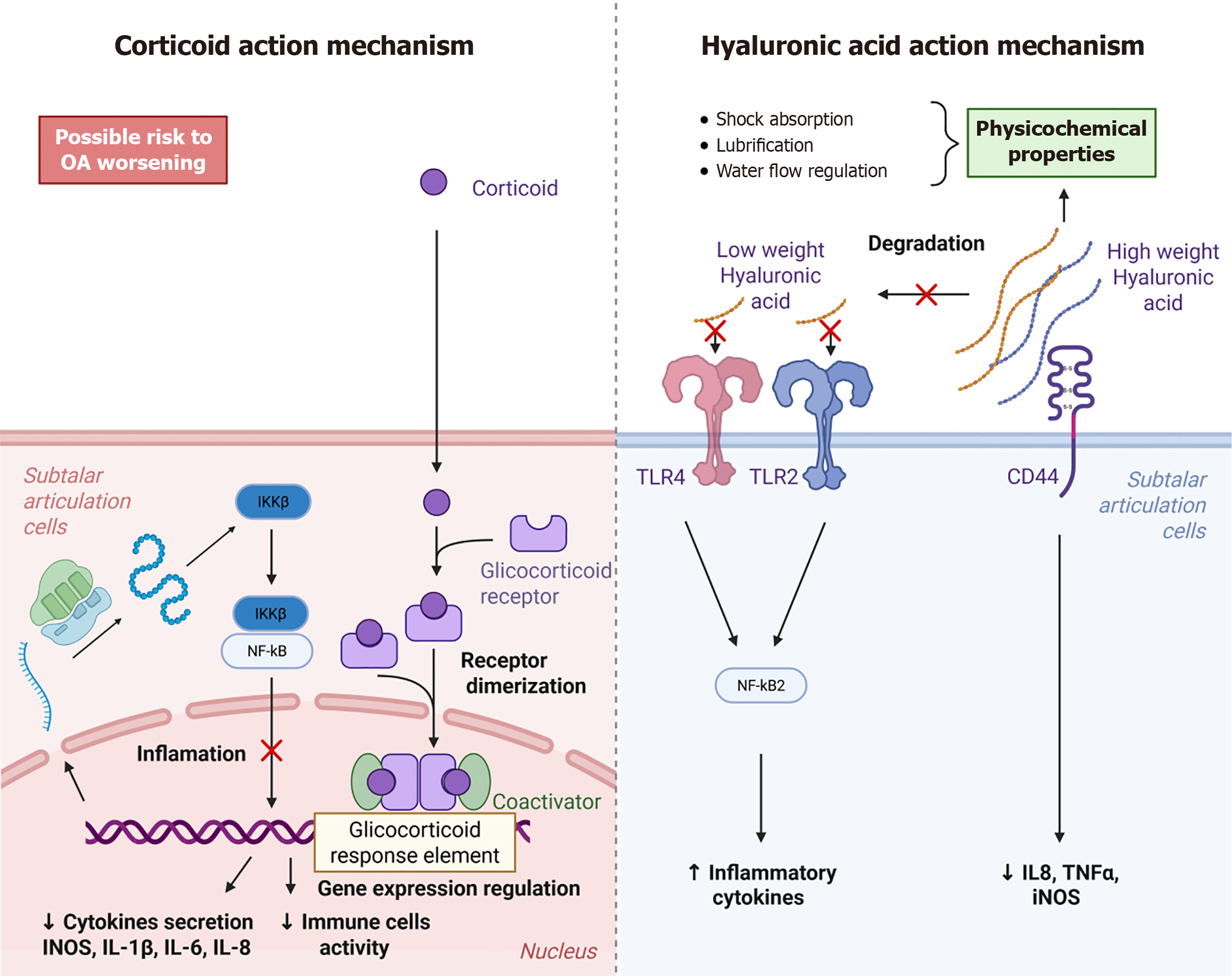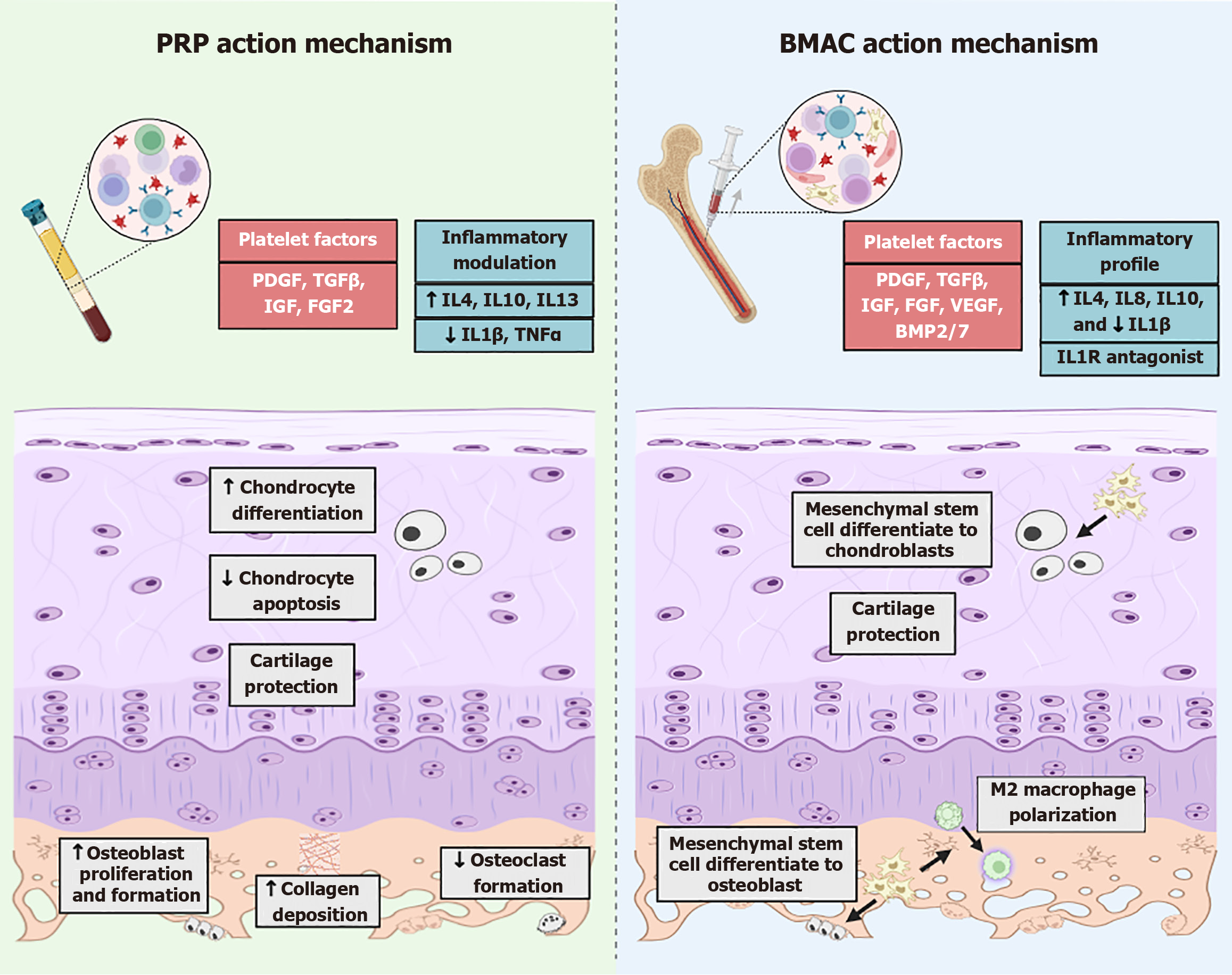Copyright
©The Author(s) 2025.
World J Orthop. Sep 18, 2025; 16(9): 109147
Published online Sep 18, 2025. doi: 10.5312/wjo.v16.i9.109147
Published online Sep 18, 2025. doi: 10.5312/wjo.v16.i9.109147
Figure 1 Mechanisms of action of corticosteroids and hyaluronic acid in joints.
In the left panel, corticosteroids bind to glucocorticoid receptors, leading to receptor dimerization and translocation to the nucleus, where they regulate gene expression via glucocorticoid response elements. This results in reduced cytokine secretion, via IKKβ-inhibition of NF-kB, and decreased immune cell activity, potentially providing short-term symptomatic relief. In the right panel, high molecular weight hyaluronic acid interacts with CD44 receptors, contributing to anti-inflammatory effects by reducing IL-8, TNF-α, and iNOS expression. Hyaluronic acid also plays a biomechanical role in shock absorption, lubrication, and regulation of interstitial fluid dynamics within the joint. Conversely, degraded low molecular weight hyaluronic acid activates Toll-like receptors TLR2 and TLR4, promoting NF-κB-mediated pro-inflammatory signaling.
Figure 2 Mechanisms of action of platelet-rich plasma and bone marrow aspirate concentrate in joints.
The left panel illustrates the mechanism of action of platelet-rich plasma (PRP), highlighting its rich content of platelet-derived growth factors (PDGF, TGF-β, IGF, FGF2) and its role in inflammatory modulation, characterized by increased IL-4, IL-10, and IL-13, and decreased IL-1β and TNF-α. PRP promotes chondrocyte differentiation, reduces chondrocyte apoptosis, and contributes to cartilage protection. Additionally, it enhances osteoblast proliferation and formation, collagen deposition, and inhibits osteoclast formation. The right panel depicts bone marrow aspirate concentrate (BMAC) action, which contains a broader range of bioactive molecules compared with PRP, including PDGF, TGF-β, IGF, FGF, VEGF, and BMP2/7. BMAC exerts anti-inflammatory effects through upregulation of IL-4, IL-8, IL-10, and downregulation of IL-1β, supported by IL-1 receptor antagonism. Mesenchymal stem cells, present in BMAC, differentiate into chondroblasts and osteoblasts, aiding cartilage protection and bone regeneration. Furthermore, BMAC promotes M2 macrophage polarization, contributing to a regenerative microenvironment. PRP: Platelet-rich plasma; BMAC: Bone marrow aspirate concentrate.
- Citation: Gomes FF, de Castro Junior IM, Matheus Guimaraes JA, Rosa IM, de Sousa EB, Cordeiro A. Intra-articular treatments for hindfoot osteoarthritis. World J Orthop 2025; 16(9): 109147
- URL: https://www.wjgnet.com/2218-5836/full/v16/i9/109147.htm
- DOI: https://dx.doi.org/10.5312/wjo.v16.i9.109147














